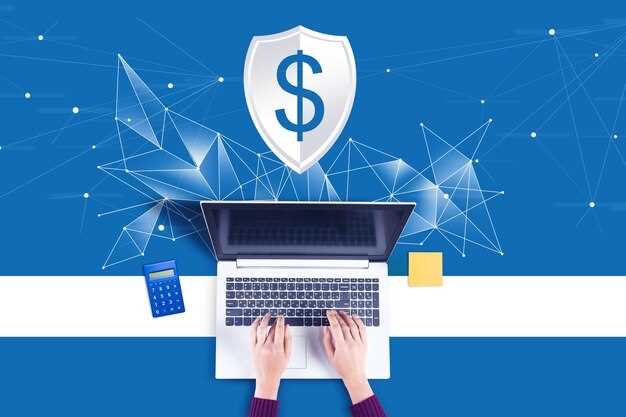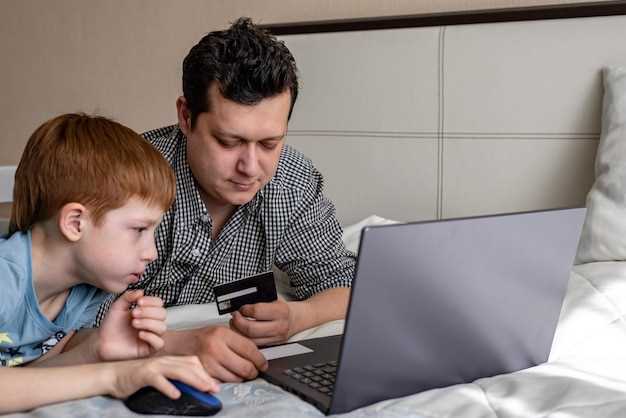How to Stay Safe When Browsing the Internet – Top Tips for Protecting Your Finances
Use strong, unique passwords for each of your online accounts. Combining uppercase, lowercase letters, numbers, and symbols creates a more resilient password. Consider using a password manager to keep track of them securely.
Enable two-factor authentication (2FA) wherever possible. This additional layer of security requires a second form of verification, such as a text message or authentication app, making it difficult for unauthorized users to access your accounts.
Be cautious when clicking on links or downloading attachments from unknown sources. Phishing attacks often disguise themselves as legitimate emails or messages, aiming to steal your personal financial information. Always verify the sender before taking action.
Regularly monitor your bank and credit card statements for any unauthorized transactions. Quick detection of any issues allows you to take immediate action, potentially minimizing financial damage. Report suspicious activity to your financial institution as soon as possible.
Utilize a reliable antivirus program to keep your devices secure. Regular updates ensure protection against the latest threats. Conduct routine scans to identify and eliminate potential malware that may compromise your financial data.
Lastly, ensure that websites you visit for financial transactions are secure. Look for “https://” in the URL and a padlock icon in the address bar. These signs indicate that the site encrypts data, providing an extra layer of protection during your online activities. For example, when using trusted platforms like mostbet casino, always verify that the website employs these security measures before proceeding with any transactions.
Identifying Legitimate Websites for Safe Transactions

Always check for HTTPS in the website URL. The presence of an SSL certificate indicates that the site encrypts data, providing an extra layer of security.
Verify the website’s domain. Trusted websites often have a recognizable and straightforward domain. Be cautious of misspellings or complex variations of well-known brands.
Look for contact information. Legitimate websites provide clear contact details, including a phone number, email address, or customer support chat option. Try to reach out if you have questions before making a purchase.
Search for reviews and ratings from other users. Websites with a solid reputation will have customer feedback available on various platforms. High ratings are good, but pay attention to detailed reviews for context.
Check the website’s privacy policy. A legitimate site will clearly outline how it collects and uses your information. If you can’t find a privacy policy, proceed with caution.
Research the payment methods accepted. Trusted sites typically use secure payment gateways, such as PayPal, Stripe, or major credit cards. Avoid sites that only accept unconventional payment methods.
Examine the overall design and functionality of the website. Professional-looking sites with updated content and functioning links signal that the business takes its online presence seriously.
Trust your instincts. If something feels off about the site, whether due to poor design, lack of information, or unreasonable deals, it’s best to look elsewhere.
Utilize cybersecurity tools. Consider using browser extensions that identify potentially malicious sites or even a VPN for an added layer of protection while browsing.
Utilizing Strong Passwords and Two-Factor Authentication

Create complex passwords that combine uppercase letters, lowercase letters, numbers, and symbols. Aim for at least 12 characters in length to increase strength. Avoid using easily guessed information like birthdays or common words.
Consider using a password manager to store and generate unique passwords for each account. This prevents you from using the same password across multiple platforms, which is a common vulnerability.
Additionally, enable two-factor authentication (2FA) on all accounts that support it. This adds an extra layer of security by requiring a second form of verification, such as a text message or authentication app, whenever you log in.
The following table outlines key practices for strong passwords and two-factor authentication:
| Practice | Description |
|---|---|
| Use Complex Passwords | Combine letters, numbers, and symbols; aim for 12+ characters. |
| Avoid Personal Information | Do not use birthdays, names, or common phrases. |
| Utilize a Password Manager | Store and generate unique passwords securely. |
| Enable Two-Factor Authentication | Add a second verification step during login. |
| Regularly Update Passwords | Change passwords periodically to reduce risks. |
Be proactive in monitoring your accounts for unauthorized activity. If you receive alerts or notifications about suspicious login attempts, change your passwords immediately. Taking these steps significantly enhances your online security and protects your finances.
Recognizing Phishing Scams and Fraudulent Emails

Always scrutinize the sender’s email address. Phishing emails often use addresses that look similar to legitimate ones, but may have slight misspellings or variations. For example, an email from “[email protected]” might appear as “[email protected].” Check for inconsistencies that could indicate a scam.
Inspect the Content Carefully
Be suspicious of emails that create a sense of urgency or pressure you to act quickly. Scammers often try to provoke fear or anxiety to bypass your careful consideration. Phrases like “immediate action required” should raise red flags. Additionally, verify the greeting; most legitimate companies address you by name rather than simply “Dear customer.”
Look for Grammatical Errors
Pay attention to the language used in the email. Phishing attempts frequently contain spelling mistakes, awkward phrasing, or unusual grammar. Established organizations take care with their communications, so multiple errors can indicate a scam.
Don’t click on any hyperlinks without checking where they lead. Hover over links to reveal the actual URL. If it looks suspicious or doesn’t match the context of the email, it’s best to avoid it. Instead, visit the official website directly by typing the URL into your browser.
If you receive unexpected attachments, do not open them without confirmation from the sender. Malware can be hidden in seemingly innocuous files. Confirm with the alleged sender through a different communication channel before taking any action.
Monitoring Your Financial Accounts for Suspicious Activity

Regularly check your bank and credit card statements. Look for unfamiliar transactions or unusual patterns. Set aside time each week to scan your accounts. You can catch issues early this way.
Set Up Alerts
Enable transaction alerts for your accounts. Most banks allow you to receive notifications via email or SMS. Customize your alerts for transactions above a certain amount or for international purchases. This immediate feedback can help you act quickly if something seems off.
Use Financial Management Apps
Consider using budgeting or financial tracking apps. These tools can centralize information from multiple accounts and flag suspicious activities. They often provide insights into spending habits, helping you recognize unauthorized transactions faster.
| Action | Description |
|---|---|
| Weekly Review | Examine bank and credit card statements for unfamiliar transactions. |
| Set Transaction Alerts | Get instant notifications for significant or international transactions. |
| Utilize Financial Apps | Track and analyze your finances through dedicated applications. |
| Check Credit Reports | Review your credit reports regularly for inaccuracies. |
| Report Suspicious Activity | If you spot anything unusual, report it to your bank immediately. |
Monitor your financial accounts as a proactive measure. Taking these steps creates a safety net against fraud and unauthorized access. Always prioritize vigilance to protect your finances.
Using Secure Connections and VPNs While Browsing
Always use HTTPS connections when accessing websites. Look for the padlock icon in the address bar, indicating that the connection is secure. This encryption protects your data from being intercepted by malicious entities.
Consider utilizing a VPN (Virtual Private Network) to mask your IP address and encrypt your internet traffic. A VPN creates a secure tunnel for your data, shielding it from eavesdroppers, especially on public Wi-Fi networks where data breaches are more prevalent.
Check the VPN provider’s privacy policy. Choose one that does not log user activity. A trustworthy provider should have a clear no-logs policy, ensuring that your browsing habits remain private.
Connect only to reputable VPN services with strong encryption protocols. OpenVPN and WireGuard are examples of protocols that offer robust security. Avoid free VPN services as they may compromise your privacy by selling your data.
Always keep your VPN application updated to benefit from the latest security features and fixes. Outdated software can expose you to vulnerabilities.
In addition to using a VPN, ensure your home network is secure. Change the default password on your router and enable WPA3 encryption if available. Regularly update the router’s firmware to patch security holes.
Be cautious of accessing sensitive accounts or conducting financial transactions on unsecured or public networks. If you must, always connect your VPN to add an extra layer of protection.
Understanding Privacy Settings and Data Protection Tools
Adjust privacy settings in your browser and social media accounts. Go to settings and review options for data collection, visibility of your profile, and app permissions. Ensure that your profile is set to private, limiting who can access your information.
Utilize Data Protection Tools
Implement browser extensions that enhance privacy. Tools like ad blockers prevent intrusive ads and trackers that can compromise your financial data. Consider using VPN services to encrypt your internet connection, making it harder for hackers to intercept your activity, especially on public Wi-Fi.
Regularly Update Your Passwords
Use password managers to generate and store strong, unique passwords for each account. Regularly update your passwords, especially after any data breach notification. Enable two-factor authentication wherever possible to add an extra layer of security to your accounts.
Avoiding Public Wi-Fi for Sensitive Financial Tasks
Use private networks for any financial transactions. Connecting to public Wi-Fi can expose your sensitive data to cybercriminals eager to intercept your information. Always opt for a secure, private connection when accessing banking sites or making online purchases.
If you must use public Wi-Fi, consider adopting a VPN (Virtual Private Network). This tool encrypts your data, making it significantly harder for hackers to access your information. Look for a reputable VPN service and install it on your devices before connecting to any public network.
Be cautious of the network names. Cyber attackers often create fake Wi-Fi networks that appear legitimate. Verify the network with the establishment’s staff to ensure you connect to the correct one.
Limit the type of tasks you perform on public Wi-Fi. Refrain from logging into bank accounts or entering credit card information. If you need to check your accounts, consider using mobile data instead of risky public connections.
Always keep your device updated. Frequent software updates patch vulnerabilities that hackers could exploit. Ensure your operating system, browsers, and applications are up-to-date to maximize security.
Enable two-factor authentication on your financial accounts. This adds an extra layer of protection by requiring a second form of verification, making it harder for anyone to access your accounts even if they obtain your password.
- Use a secure VPN for public networks.
- Verify public Wi-Fi networks before connecting.
- Limit online banking transactions on public networks.
- Regularly update your devices and software.
- Activate two-factor authentication for added security.
Keeping Software Up-To-Date to Prevent Cyber Threats
Regularly update all software on your devices, including operating systems, antivirus programs, browsers, and applications. Set up automatic updates whenever possible to ensure you never miss critical patches. This practice significantly reduces vulnerabilities that cybercriminals seek to exploit.
Check for updates manually if automatic updates are not available. Most software has an option under settings to search for updates. Prioritize critical security updates that address known flaws.
Remove outdated or unused software and applications. These can become entry points for malware if not maintained. Regularly audit your installed programs and eliminate those that no longer serve a purpose.
Be vigilant with third-party software as well. Ensure these applications are sourced from reputable sites and frequently updated. Cyber attackers often target outdated third-party software to gain access to your system.
Backup your data before applying updates. While rare, updates can sometimes cause issues or conflicts. Keeping a recent backup ensures your data remains safe even if something goes wrong during the update process.
Use security tools that alert you about missing updates. Certain antivirus solutions come equipped with features that notify you if important software is out of date. Consider integrating these tools into your cybersecurity routine.
By maintaining updated software, you create a robust defense against cyber threats, protecting your financial information and personal data effectively.
Video:
11 Internet Safety Tips for Your Online Security
11 Internet Safety Tips for Your Online Security by Kaspersky 219,252 views 2 years ago 4 minutes, 2 seconds
Q&A:
What are the first steps I should take to protect my finances while online?
To begin protecting your finances while browsing the Internet, make sure to use strong, unique passwords for each of your accounts. Avoid using easily guessed passwords such as birthdays or common words. Additionally, enable two-factor authentication wherever possible; this adds an extra layer of security by requiring a second form of verification when logging in. Regularly check your bank statements for any unauthorized transactions and consider using a password manager to keep track of your passwords securely.
How can I identify phishing emails that may compromise my financial information?
Phishing emails often appear to be from legitimate organizations but usually contain misspellings or grammatical errors. Be cautious of emails that require you to click on a link or provide personal information urgently. Check the sender’s email address carefully, as cybercriminals frequently use addresses that resemble legitimate ones but contain slight differences. Always hover over links to see where they lead before clicking. When in doubt, contact the organization directly using a phone number you trust, rather than relying on contact details provided in the email.
What role does my internet connection play in keeping my financial data secure?
Your internet connection can significantly influence your online security. Using public Wi-Fi networks can leave your information vulnerable to hackers. When accessing financial accounts, it’s best to use a secure, private network. If you need to use public Wi-Fi, consider using a Virtual Private Network (VPN); this creates a secure tunnel for your data, making it harder for anyone to intercept your information. Always ensure that you are connected to sites that use HTTPS, as this indicates a secure encryption protocol.
How often should I update my security software, and what should I look for in a good program?
It’s wise to keep your security software updated regularly, ideally set to auto-update to ensure you receive the latest protection against threats. Look for software that provides real-time protection, automatic updates, and strong anti-malware components. Programs that come with a firewall and protect against phishing are also beneficial. Reading reviews and checking ratings from reliable sources can help you choose an effective program. Remember to periodically scan your devices for any detected threats to maintain overall security.
What are the signs that my financial information may have been compromised?
Signs that your financial information might be compromised include unexplained charges on your bank statements, receiving bills for accounts or purchases you didn’t make, or notifications from your bank about unusual activity. Additionally, if you begin to receive phishing calls or emails that seem targeted, it may indicate that your information has been leaked. In these cases, it’s essential to take immediate action: contact your financial institution, change your passwords, and consider placing a fraud alert on your credit report.
What are the most important tips for protecting my finances while browsing online?
To safeguard your finances while browsing online, consider these key tips: First, use strong, unique passwords for each of your accounts. Make sure to enable two-factor authentication wherever possible, as this adds an extra layer of security. Be cautious about the websites you visit; always look for the “https://” in the URL, indicating that the site is secure. Look out for phishing emails that might trick you into providing personal information. Additionally, keeping your software and devices up to date will help protect you from vulnerabilities. Finally, consider using reputable antivirus software to detect and prevent malware infections. By following these guidelines, you can significantly enhance your online safety.













